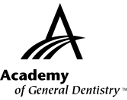|
Exercise No. 345
Subject Code: 739
Diagnosis of Oral Pathology
The 15 questions for this exercise are based on the article, Clinical and demographic overlaps among immunologically mediated oral diseases: a challenge for clinicians, on pages 67-72. This exercise was developed by Merlin P. Ohmer, DMD, FAGD, in association with the General Dentistry Self-Instruction committee.
|
Reading the article and successfully completing the exercise will enable you to:
- better understand immunologically mediated oral diseases;
- perform a differential diagnosis; and
- better understand the histopathology of vesiculobullous lesions.
|

